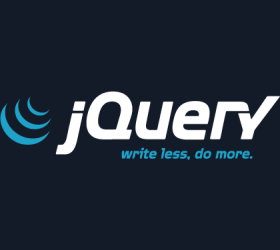Myriad discussions on embracing cloud technologies by all types of organizations irrespective of size have been in the air since longtime with lots of views pouring like torrential rains highlighting the pros and cons. Many organizations have already assimilated the cloud technologies to forge the organization forward with the CTO/CIOs sitting the driver’s seat with an objective to leverage the cloud technologies and reap the benefits. On demand, OPEX (pay per use), quick provisioning, scalability, flexibility and measurability (metering and reporting ) have been the watchwords to propel the cloud technology to be the most enthusiastically sought technology paradigm in the current technology landscape while the other technologies that are being debated, discussed and implemented rapidly like Big Data and IOT to quote a couple. Cloud technologies have been able to commoditize and democratize the otherwise expensive state of art technologies making it available across all spectrums of organizations and size.
Public, Private and Hybrid types of cloud have put forth options such as PAAS, IAAS and SAAS to provide flexible offerings to demonstrate the ease of availability of technology to the willing organizations.
Having said this, it would be a worthwhile exercise to see whether the organizations are in the right direction in imbibing the cloud technologies to reap the benefits. It would apposite to reflect a while on the type of the organizations which could embrace the cloud technology at ease. Therefore it becomes imperative to bucket the technology organizations in terms of the agility to imbibe cloud technologies. The quick and easiest analogy which could be thought of is that Gen X, Gen Y and Gen Z models of demography and quickly mapping the technology organizations in what I would be tempted to call Gen X, Gen Y and Gen Z technology
organizations. Gen X technology organization is one where more than 80 % of legacy systems loosely tied with various systems within the organization serving the business. In a same vein, Gen Y and Gen Z have around 60 % and 20 % legacy systems respectively and rest being the cloud ready systems. Gen Z+ an organization which starts leveraging the state of technologies, ab initio, without any capital investments and leveraging the state of art technologies like cloud to the extent of 100 %. Organizations like SKPE, Netflix, Uber and many more falls in this category. Gen Z+ seamlessly moves along the tide of the cloud technologies.
Based on the categorization, one can quickly observe the ease of cloud technology adoption for organization is inversely proportional to the level of the legacy systems in place. Higher the legacy systems, lower will the cloud adoption and vice versa. Now the onus is to carefully define the word “Legacy Systems”. Legacy systems are those which are built on the platforms which are currently neither ready nor available in line with the cloud offerings. Legacy systems are two or three generations / versions in terms of operating systems, database and other middle-ware technologies thereby not cloud ready. Further from business perspective, Legacy systems are the one where business users are fixated and unwilling to move to a matured product on account of the perfect fit of system offerings currently available in-toto to manage the business comfortably besides for the fear of losing functionality.
While the organization tend to move from one generation up there is a constant pressure against the endeavor because of the coverage in the organization and not able to mark to the market in terms of technology advancements. Coverage means “moving the complete set of infrastructure supporting an application” to the cloud supported platforms. Technology advancement is swift while coverage takes long time as it is dependent on many intrinsic characteristics of the organization. Therefore, the right way to quickly be in the bandwagon is to continuously and appropriately strike balance between coverage and technology advancement?. In a nutshell, the challenges faced by the other than Z+ type organization is basically on account mismatch of coverage and technology advancement
Analyzing the applications landscape, applications can be divided into infrastructure and business applications. Infrastructure applications are the ones like email, storage, printing etc while business applications could be an off-the-shelf or home grown application. The major challenge lies with business applications as there are interplay of the various versions of operating systems, RDBMS, middleware and the business logic coded. The applications are also dependent on the maturity and agility of the software vendor as well. Off-the-shelf applications with negligible customization generally are cloud ready.
Infrastructure applications should be the one targeted to move to the cloud at the earlier as these are commoditized and democratized. Existing business applications should be rewritten/upgrade so that it is cloud fit. However, it is easier to say than done. It is imperative to work on current plus 2 versions parallel and make it cloud ready on a specific agreed future point in time. It is advisable to have an embargo on the enhancements of the functionalities for a specific period so that all enhanced functionalities as agreed on a particular point in time are ready delivered. This could be anywhere between 12-18 months. The efforts are future centric.
With the categorization of the organizations and the flavor of the applications outlined, it is important now to focus on the building blocks that bolster organizations to embrace cloud technology. The levels will differ for each of the generation models delineated earlier.



